Monday, January 19, 2009
New Caregiver Begins!
My Dad's new daytime caregiver began working the 9AM-3Pm shift today. Everyone is praying that she works out.
Saturday, January 17, 2009
TV Converter Box
Today, I got a TV converter box for the (non-cable) television in my Dad's room. I am having difficulty connecting it. I hope Congress agrees to extend the deadline til June 2009 instead of February 2009
Friday, January 16, 2009
Police Check on Elderly In Sub-Zero Temperatures!
Chicago is experiencing record low temperatures. Currently, with the wind chill, it's -35. I was shocked last night when the Chicago police department called us to check on our senior citizen. What a great service!!
Thursday, January 15, 2009
New Caregiver January 2009
I met the new caregiver today who will replace an existing one. The agency selected her to work the 9AM-2PM shift. It’s a big responsibility because she will be here the bulk of the day Monday-Friday. She will awaken Dad, give him breakfast, bathe him, do laundry, change his linens, give him medications etc. She will also let the other caregivers (from hospice) in to care for Dad.
She seems quite pleasant and is a retired postal worker. She has adult children and grandchildren. She drives and she has a house phone and cell phone. She seems really with it and very reflective. I really hope she works out.
I was also able to meet a new Certified Nurse’s Assistant from hospice who will help Dad twice a week. I also found her to be pleasant.
The entire hospice team is new and I spoke with the Case Manager to give her an update on the new schedule.
Change is always especially difficult when dealing with seniors.
She seems quite pleasant and is a retired postal worker. She has adult children and grandchildren. She drives and she has a house phone and cell phone. She seems really with it and very reflective. I really hope she works out.
I was also able to meet a new Certified Nurse’s Assistant from hospice who will help Dad twice a week. I also found her to be pleasant.
The entire hospice team is new and I spoke with the Case Manager to give her an update on the new schedule.
Change is always especially difficult when dealing with seniors.
Replacing a Caregiver
A caregiver who has been with us almost 4 years has to care for her sick Mom. I was forced to replace her. I am in Chicago and will help train her replacement. The agency sent the new lady to slowly learn the job last Friday.
I have mixed emotions about bringing a new person into our home. I hope Dad adapts to her.
--
I have mixed emotions about bringing a new person into our home. I hope Dad adapts to her.
--
Saturday, January 10, 2009
Eldercare Across the Globe--4 Stories

http://www.eldercare.com/modules.php?op=modload&name=CG_Resources&file=article&sid=965
Elder Care Across The Globe By Natasha Curry
Whose responsibility is it to care for the aging members of society? Is elder care something we should expect the state to provide? Or is it the duty of the family and community? Answers to this essential question vary widely across the globe, with some countries relying almost exclusively on government support, while in others, families shoulder the entire responsibility.
So who's got it right? And how many different ways of caring for the elderly are there on our aging planet? Let's look at a few radically different situations.
Germany
Germany, one of the most economically developed Western nations, relies on a balance of family care and state-subsidized initiatives to care for its growing elderly population. There are one million elderly German citizens who need regular and intensive care, and this duty usually falls to a close female family member, married, between 40 and 55 years old.
One of the main problems with this set-up is that many of these women work full time, and, due to the lack of employer support, find it very hard to balance their work and caregiving duties. As a result, one in ten caregivers is forced to quit work to be able to care for their loved one. There are surprisingly few community services for caregivers to turn to -- only 25 percent of family caregivers are supported by services such as daily in-home services, day care centers or facilities for short-term care.
On the more positive front, Germany introduced a mandatory long term care insurance law in 1994 which covers the whole population. It is financed by contributions made by employers, employees and pensioners, and offers benefits in either cash or in services. The care recipient can choose to pay informal caregivers, usually a family member, or to hire a professional in-home service.
Mexico
Caregiving in Mexico, regardless of employment status or social standing, is seen as the primary duty of the family. Since pre-Hispanic times, family links in Mexico have been extremely strong and as a result caregiving of the elderly, sick and poor is a socially recognized responsibility of the family, including all members of the extended family.
As a result, family members expect to care for their elderly relatives. However, young adults generally ensure their own needs are met first, then the needs of their children, then the needs of the elders. Consequently, the care many elders receive may not be sufficient. A study in 1989 of 770 elderly women showed that 4 percent said they were very unhappy with their lives.
Mexican work organizations and the government have not developed any policies, services or benefits to support family caregivers. There are however several types of government, workplace and community services for people 60 years of age and older, including pensions, health care, long term care, social services and advocacy services.
Indigenous Mexicans however have a different story to tell. They receive far fewer government services than the rest of the population, due in part to their rural location. Elders within this community rely almost totally on their extended families for assistance.
Uganda
Uganda is one of the poorest countries in the world, with 50 percent of the population living on less than $1 a day, 58 percent without access to clean water and only one doctor for every 25,000 Ugandans. It should come as no surprise to learn therefore that life expectancy is low, at 45 years of age.
However, almost 4 percent of the population manages to live past the age of 60; a figure that is expected to grow significantly this century.
Caregivers in Uganda have to give both materially and physically to their aging relatives. Few Ugandan seniors have any kind of retirement funds, and are often unable to meet all of their needs. There are no formal, governmental elder care services in Uganda: families or others in the community have always assumed responsibility for the care of the elderly. This responsibility is steeped in the social fabric of the country. Elders are regarded with the utmost respect throughout the community. Parents still look forward to the day when they can relax and be taken care of by their offspring or grandchildren. They expect to be supported in return for the care they gave to their children. However, as increasing numbers of Ugandans move to the cities in search of work and a better life, these traditional roles are being abandoned. To compound this problem, elderly women are often driven from their homes when their husband dies, as his direct relatives have the right to seize any land and property.
Uganda's National Social Security Fund does not cover nursing homes and home care services for the elderly. Instead, the Church of Uganda was one of the first institutions to establish services for seniors. Known as The Old Age Campaign Center, it offers residential care to destitute elders who have no family to care for them. However, such formal care is seen as being un-Ugandan, and a radical departure from the traditional way of life.
Sweden
Sweden is often hailed as the paragon of elder care, and the statistics do seem to support this. Sweden has proportionately more elders than almost any other country in the world. Elder care is a responsibility divided between the family and society. Until 1956, elderly parents could demand, by law, to be cared for by their children. Then in 1982 the Swedish Social Services Act established the legal right of the individual to assistance from society. In 1997, over 94 percent of the elder care in Sweden was provided by the state in some way or another.
Informal caregivers are paid by the government through a Paid Caregiver Program. The salary is determined by the elder's care needs, and proportion to the number of hours deemed necessary to perform the required care. The paid caregiver receives all the benefits of social insurance, plus the pension credits he or she would have received in regular employment. Employees are also entitled to a maximum of 60 days paid time off from their workplace to care for elderly family members.
Sweden's social insurance program provides universal health care and pensions for all its citizens. These programs enable most seniors to live a relatively comfortable life. In 1995, about 8 percent of people age 65 and older, and 23 percent of people age 80 and over, lived in some kind of care facility.
***
These four scenarios paint very differing visions of elder care across the globe. Before we all apply for immigration to Sweden, it's important to remember that the changing picture depends heavily on differing societal and cultural expectations. Our assumptions about what is "good" care and what is "bad" care may be far from the reality.
A recent Global Aging Report prepared by AARP discovered:
• Most older Dutch prefer to live independently of their children
• Italians on the other hand strongly favor children supporting parents, and both generations see living together as a desirable option.
What is noticed across the globe however, is that governments are starting to sit up and take notice of their elder citizens, and realizing that the aging of their populations, combined with more and more women (the traditional caregivers in just about every nation) entering the workplace, may demand a greater state responsibility.
Many of the statistics in this article are taken from "Work and Caring for the Elderly" by Viola Lechner and Margaret Neal.
Wednesday, January 7, 2009
Parenting Your Parent
Here is a helpful article posted on eldercare.com:
This time of the year is a busy one for families. First there's Thanksgiving, then the holiday season which leads seamlessly all the way up to the New Year celebrations. It's a time for family reunions and get-togethers, and for some it may be a full twelve months since parents, grandparents and kids all spent time together.
Making plans for the future
If it's been a while since you saw your aging parents, you may be shocked at how your mother's health status has changed in such a short time. Did you always have to shout so loud to be heard? Or you may be stuck by the realization that your dad is actually growing older. Was he always so grumpy and absent-minded? Whatever your situation, the holiday season is a time to broach that difficult topic of 'what happens next', and to start making plans for the future.
Posing those difficult questions
The idea of this discussion alone may be enough to increase your blood pressure, but no one ever said that discussing your aging parents' future would be easy. Many of us are used to our parents asking the questions - "so what are you going to do with your life?" How many times have you heard that one? And yet now, as your parent's current or potential caregiver, it's up to you to start asking the difficult questions regarding your parents' medical, financial and housing plans and arrangements.
Aging is inevitable
So why is it so difficult for children of aging parents to discuss the future? Each situation is obviously different, but for some of us it may be the sudden reversal of roles that seems so strange, or the fact that we are now meddling in our parents' personal lives. There may also be a reluctance to admit that the inevitable has happened; our parents have aged and that means that we too will most likely grow old some day.
It's never too soon
Yes, it's a tough conversation to initiate, but remember that it's never too soon to discuss the future with your aging parent. Why? Because it's easier to make plans before a crisis, such as a fall or a stroke, catches everyone off guard. It's much better to have a plan in place early, rather than scrambling around at the last moment. Also, many issues such as arranging for long term care insurance or finding a place in a nursing home must be taken care of well in advance.
So plan your approach and timing carefully and you may be pleasantly surprised. Chances are, if it's a subject on your mind, it is on your elder's mind too.
Be sure to listen
Although this looming conversation may feel like one of the hardest things you've ever had to do, don't let your elder sense that. While it's a good idea to plan the topics you'd like to cover, and the decisions and conclusions you'd like to reach, try not to make the conversation appear too prepared and scripted. After all, remember what this is meant to be - a conversation between two people. Be prepared to listen to what your parent has to say; she may have some pretty clear plans of her own already.
Here are some tips and pointers to help you try and make the conversation go smoothly:
--Don't let your questions appear as though you are interrogating. If you are sensitive and show genuine interest and concern, chances are your loved one will open up to you.
--Be supportive and empathetic, not judgmental. The last thing you want is to appear threatening and put her on the defense.
--Ask open-ended questions, giving your parent the opportunity to share the circumstances in her life with you.
--Be prepared to accept your parent's decisions and point of view, even if you find it hard to agree; remember, it's her life you are discussing.
--Don't overwhelm your loved one with questions. It may take several discussions over a period of days to cover all the areas you feel are important. However, be sure to make a definite time for the next discussion or there is a danger that the subject is brushed back under the carpet.
This may be a good time to share your thoughts and plans for your own aging. Let your loved one feel that she's not alone in her concerns.
This time of the year is a busy one for families. First there's Thanksgiving, then the holiday season which leads seamlessly all the way up to the New Year celebrations. It's a time for family reunions and get-togethers, and for some it may be a full twelve months since parents, grandparents and kids all spent time together.
Making plans for the future
If it's been a while since you saw your aging parents, you may be shocked at how your mother's health status has changed in such a short time. Did you always have to shout so loud to be heard? Or you may be stuck by the realization that your dad is actually growing older. Was he always so grumpy and absent-minded? Whatever your situation, the holiday season is a time to broach that difficult topic of 'what happens next', and to start making plans for the future.
Posing those difficult questions
The idea of this discussion alone may be enough to increase your blood pressure, but no one ever said that discussing your aging parents' future would be easy. Many of us are used to our parents asking the questions - "so what are you going to do with your life?" How many times have you heard that one? And yet now, as your parent's current or potential caregiver, it's up to you to start asking the difficult questions regarding your parents' medical, financial and housing plans and arrangements.
Aging is inevitable
So why is it so difficult for children of aging parents to discuss the future? Each situation is obviously different, but for some of us it may be the sudden reversal of roles that seems so strange, or the fact that we are now meddling in our parents' personal lives. There may also be a reluctance to admit that the inevitable has happened; our parents have aged and that means that we too will most likely grow old some day.
It's never too soon
Yes, it's a tough conversation to initiate, but remember that it's never too soon to discuss the future with your aging parent. Why? Because it's easier to make plans before a crisis, such as a fall or a stroke, catches everyone off guard. It's much better to have a plan in place early, rather than scrambling around at the last moment. Also, many issues such as arranging for long term care insurance or finding a place in a nursing home must be taken care of well in advance.
So plan your approach and timing carefully and you may be pleasantly surprised. Chances are, if it's a subject on your mind, it is on your elder's mind too.
Be sure to listen
Although this looming conversation may feel like one of the hardest things you've ever had to do, don't let your elder sense that. While it's a good idea to plan the topics you'd like to cover, and the decisions and conclusions you'd like to reach, try not to make the conversation appear too prepared and scripted. After all, remember what this is meant to be - a conversation between two people. Be prepared to listen to what your parent has to say; she may have some pretty clear plans of her own already.
Here are some tips and pointers to help you try and make the conversation go smoothly:
--Don't let your questions appear as though you are interrogating. If you are sensitive and show genuine interest and concern, chances are your loved one will open up to you.
--Be supportive and empathetic, not judgmental. The last thing you want is to appear threatening and put her on the defense.
--Ask open-ended questions, giving your parent the opportunity to share the circumstances in her life with you.
--Be prepared to accept your parent's decisions and point of view, even if you find it hard to agree; remember, it's her life you are discussing.
--Don't overwhelm your loved one with questions. It may take several discussions over a period of days to cover all the areas you feel are important. However, be sure to make a definite time for the next discussion or there is a danger that the subject is brushed back under the carpet.
This may be a good time to share your thoughts and plans for your own aging. Let your loved one feel that she's not alone in her concerns.
Monday, January 5, 2009
Profile of Caregivers
The American Society on Aging provides a profile of caregivers. I found it helpful and comprehensive.
A Profile of Informal and Family Caregivers
Definition
The term caregiver refers to anyone who provides assistance to someone else who needs it to maintain an optimal level of independence. Families provide the vast majority of care and are commonly referred to as "family caregivers." Caregivers may or may not live with the care recipient. The way the term family caregiver is defined by policymakers significantly affects the type of services provided and the cost of providing them. For example, some state-funded respite programs limit eligibility to family members living with the person needing care (e.g., a spouse). In this case, family members who assume major care responsibilities but do not live with the impaired person (e.g., adult children) are excluded from respite assistance.
Prevalence
Estimates vary on the number of caregivers in the United States, depending on the definition used:
Nearly one out of every four U.S. households (23 percent, or 22.4 million)provides care to a relative or friend aged 50 or older.
About 15 percent of U.S. adults care for a seriously ill or disabled family member.
About 13.3 million people -- 7 percent of U.S. adults -- are spouses or adult children of disabled older people and have the potential responsibility for their care. Of these, about 85 percent (or 11.4 million) are adult children.
About 7.3 million people are informal caregivers, defined as spouses, adult children, other relatives, and friends who provide unpaid help to disabled older people living in the community. Of these, about three-fifths (or 4.2 million) are spouses and adult children, and the remaining two-fifths (3.1 million) are other relatives, friends and neighbors.
Who are the caregivers?
Gender.
Caregiving is largely a women's issue. Nearly three out of four (72 percent) caregivers are female.
Age.
The average caregiver is 57 years old. However, more than one in three caregivers is an older adult herself: one quarter are between 65 and 75 years old, and another 10 percent are at least 75 years of age. One recent national survey found that the average age of caregivers is 46.
The median age of employed caregivers of the elderly is 45 years old; 28 percent are under 35 years of age and 15 percent are at least 65 years old.
Women in their 50s are more likely than older women to experience two or more caregiving episodes. These women are more likely than women in their 60s and 70s to live with the care recipient.
Relationship to care recipient.
An estimated 85 percent of caregivers are related to the care recipient.
In general, if the care recipient is married, the primary caregiver will be the spouse; otherwise adult children, typically adult daughters, will assume the caregiving role.
Nearly 23 percent of caregivers are wives, 13 percent are husbands, 29 percent are adult daughters, and 9 percent are sons. The remaining 26 percent are siblings, grandchildren, other relatives, and friends or neighbors.
Older generations also care for younger generations. Increasing numbers of mid-life and older women have primary responsibility for their grandchildren and great-grandchildren. There are some interesting cultural differences, with 12 percent of African American children living with grandparents, compared to 5.8 percent of Hispanic children and 3.6 percent of white children.
Living arrangements.
Nearly three out of four of caregivers live with the care recipient.
Between 20 percent and 40 percent of caregivers are in the "sandwich generation," with children under age 18 to care for in addition to their disabled older relative.
One-third of primary caregivers assume major care responsibilities because they live closer to the care recipient than other family members.
Nearly 7 million Americans, or 3.5 percent of the U.S. adult population are long-distance caregivers (those who live a distance of one hour or more from the older adult needing assistance). The average travel time for these caregivers to reach their relative is four hours.
Employed caregivers.
Between one-third and nearly two-thirds of caregivers are also employed outside the home. This trend is likely to continue as women continue to enter the labor force.
Between 7.4 percent and 11.8 percent of the workforce is involved in providing care for an older person.
An estimated 9 percent of caregivers quit their jobs to provide care. For adult daughters, this number rises to 12 percent.
Caregiving tasks.
Unlike most formal service providers, families provide care at night, over weekends, and on demand. Studies have found that from 53 percent to 69 percent of people with dementia are out of bed most nights -- waking the caregiver and requiring supervision.
Two-thirds (66 percent) of caregivers assist older people with activities of daily living (ADLs). Of these, 19 percent assist with one daily living task, 15 percent assist with two, and one-third (33 percent) assist with three or more.
Three out of four caregivers help with grocery shopping, transportation, and housework, and about 66 percent prepare meals or manage finances. Half help administer medications. These tasks are known as instrumental activities of daily living (IADLs).
Time spent caregiving.
The duration of caregiving can last from less than a year to over 40 years. The majority of caregivers provide unpaid assistance for one to four years; 20 percent however provide care for five years or longer.
Eighty percent of caregivers provide unpaid assistance seven days a week. On average, caregivers provide personal care assistance and household maintenance chores for 18 hours a week. Some 48 percent give care for eight hours or less, while 21 percent provide help for nine to 20 hours per week, and 14 percent give care for 21 hours per week or more. Eleven percent provide round-the-clock care.
Time spent caregiving varies by type of impairment. One statewide study of caregivers of cognitively impaired adults found caregivers spending an average of 13 hours per day providing care--more than a full-time job outside the home.
Who is being cared for?
Almost 100 million people in the United States have one or more chronic conditions.
Nearly 40 percent of older people living in the community -- 12 million people aged 65 and over -- are limited by chronic conditions. Of these, three million (or 10 percent of older people) are unable to perform adls. Additionally, an estimated 1.5 million older people needing long-term care live in nursing homes.
An estimated 10 percent of people 65 years of age and older, and nearly half of those 85 and older, suffer from Alzheimer's disease. People with Alzheimer's disease or another dementing illness can never safely be left alone and often require round-the-clock care.
Talking Points
--Almost 100 million people in the United States have one or more chronic conditions. Over the next twenty-five years, this number is expected to increase to 134 million Americans.
--Nearly one in four U.S. households is involved in caring for a relative or friend aged 50 or older.
--Caregiving is largely a women's issue. Some 72 percent of caregivers are female, mostly wives and adult daughters.
--The average age of a caregiver is 57. More than one in three, however, are older themselves (65 years of age and older).
--Caregiving can last from less than a year to over forty years. Some 80 percent of caregivers provide unpaid assistance seven days a week.
--People are likely to have more older people in their families today than in the past.
--By 2030, when the baby boomers reach age 65, one in five Americans will be at least 65, for a total of about 70 million older people, more than twice the number in 1996.
--Five social trends may affect the supply of caregivers in the future: (1) increasing divorce and remarriage rates; (2) increasing geographic mobility; (3) decreasing family size; (4) delayed childbearing; and (5) more women in the workplace.
--In the twenty-first century the demands placed on family and other informal caregivers are likely to escalate, affecting nearly every American family.
American Society on Aging 833 Market St., Suite 511 San Francisco, CA 94103 http://www.asaging.org info@asa.asaging.org
This article provided courtesy of the American Society on Aging
A Profile of Informal and Family Caregivers
Definition
The term caregiver refers to anyone who provides assistance to someone else who needs it to maintain an optimal level of independence. Families provide the vast majority of care and are commonly referred to as "family caregivers." Caregivers may or may not live with the care recipient. The way the term family caregiver is defined by policymakers significantly affects the type of services provided and the cost of providing them. For example, some state-funded respite programs limit eligibility to family members living with the person needing care (e.g., a spouse). In this case, family members who assume major care responsibilities but do not live with the impaired person (e.g., adult children) are excluded from respite assistance.
Prevalence
Estimates vary on the number of caregivers in the United States, depending on the definition used:
Nearly one out of every four U.S. households (23 percent, or 22.4 million)provides care to a relative or friend aged 50 or older.
About 15 percent of U.S. adults care for a seriously ill or disabled family member.
About 13.3 million people -- 7 percent of U.S. adults -- are spouses or adult children of disabled older people and have the potential responsibility for their care. Of these, about 85 percent (or 11.4 million) are adult children.
About 7.3 million people are informal caregivers, defined as spouses, adult children, other relatives, and friends who provide unpaid help to disabled older people living in the community. Of these, about three-fifths (or 4.2 million) are spouses and adult children, and the remaining two-fifths (3.1 million) are other relatives, friends and neighbors.
Who are the caregivers?
Gender.
Caregiving is largely a women's issue. Nearly three out of four (72 percent) caregivers are female.
Age.
The average caregiver is 57 years old. However, more than one in three caregivers is an older adult herself: one quarter are between 65 and 75 years old, and another 10 percent are at least 75 years of age. One recent national survey found that the average age of caregivers is 46.
The median age of employed caregivers of the elderly is 45 years old; 28 percent are under 35 years of age and 15 percent are at least 65 years old.
Women in their 50s are more likely than older women to experience two or more caregiving episodes. These women are more likely than women in their 60s and 70s to live with the care recipient.
Relationship to care recipient.
An estimated 85 percent of caregivers are related to the care recipient.
In general, if the care recipient is married, the primary caregiver will be the spouse; otherwise adult children, typically adult daughters, will assume the caregiving role.
Nearly 23 percent of caregivers are wives, 13 percent are husbands, 29 percent are adult daughters, and 9 percent are sons. The remaining 26 percent are siblings, grandchildren, other relatives, and friends or neighbors.
Older generations also care for younger generations. Increasing numbers of mid-life and older women have primary responsibility for their grandchildren and great-grandchildren. There are some interesting cultural differences, with 12 percent of African American children living with grandparents, compared to 5.8 percent of Hispanic children and 3.6 percent of white children.
Living arrangements.
Nearly three out of four of caregivers live with the care recipient.
Between 20 percent and 40 percent of caregivers are in the "sandwich generation," with children under age 18 to care for in addition to their disabled older relative.
One-third of primary caregivers assume major care responsibilities because they live closer to the care recipient than other family members.
Nearly 7 million Americans, or 3.5 percent of the U.S. adult population are long-distance caregivers (those who live a distance of one hour or more from the older adult needing assistance). The average travel time for these caregivers to reach their relative is four hours.
Employed caregivers.
Between one-third and nearly two-thirds of caregivers are also employed outside the home. This trend is likely to continue as women continue to enter the labor force.
Between 7.4 percent and 11.8 percent of the workforce is involved in providing care for an older person.
An estimated 9 percent of caregivers quit their jobs to provide care. For adult daughters, this number rises to 12 percent.
Caregiving tasks.
Unlike most formal service providers, families provide care at night, over weekends, and on demand. Studies have found that from 53 percent to 69 percent of people with dementia are out of bed most nights -- waking the caregiver and requiring supervision.
Two-thirds (66 percent) of caregivers assist older people with activities of daily living (ADLs). Of these, 19 percent assist with one daily living task, 15 percent assist with two, and one-third (33 percent) assist with three or more.
Three out of four caregivers help with grocery shopping, transportation, and housework, and about 66 percent prepare meals or manage finances. Half help administer medications. These tasks are known as instrumental activities of daily living (IADLs).
Time spent caregiving.
The duration of caregiving can last from less than a year to over 40 years. The majority of caregivers provide unpaid assistance for one to four years; 20 percent however provide care for five years or longer.
Eighty percent of caregivers provide unpaid assistance seven days a week. On average, caregivers provide personal care assistance and household maintenance chores for 18 hours a week. Some 48 percent give care for eight hours or less, while 21 percent provide help for nine to 20 hours per week, and 14 percent give care for 21 hours per week or more. Eleven percent provide round-the-clock care.
Time spent caregiving varies by type of impairment. One statewide study of caregivers of cognitively impaired adults found caregivers spending an average of 13 hours per day providing care--more than a full-time job outside the home.
Who is being cared for?
Almost 100 million people in the United States have one or more chronic conditions.
Nearly 40 percent of older people living in the community -- 12 million people aged 65 and over -- are limited by chronic conditions. Of these, three million (or 10 percent of older people) are unable to perform adls. Additionally, an estimated 1.5 million older people needing long-term care live in nursing homes.
An estimated 10 percent of people 65 years of age and older, and nearly half of those 85 and older, suffer from Alzheimer's disease. People with Alzheimer's disease or another dementing illness can never safely be left alone and often require round-the-clock care.
Talking Points
--Almost 100 million people in the United States have one or more chronic conditions. Over the next twenty-five years, this number is expected to increase to 134 million Americans.
--Nearly one in four U.S. households is involved in caring for a relative or friend aged 50 or older.
--Caregiving is largely a women's issue. Some 72 percent of caregivers are female, mostly wives and adult daughters.
--The average age of a caregiver is 57. More than one in three, however, are older themselves (65 years of age and older).
--Caregiving can last from less than a year to over forty years. Some 80 percent of caregivers provide unpaid assistance seven days a week.
--People are likely to have more older people in their families today than in the past.
--By 2030, when the baby boomers reach age 65, one in five Americans will be at least 65, for a total of about 70 million older people, more than twice the number in 1996.
--Five social trends may affect the supply of caregivers in the future: (1) increasing divorce and remarriage rates; (2) increasing geographic mobility; (3) decreasing family size; (4) delayed childbearing; and (5) more women in the workplace.
--In the twenty-first century the demands placed on family and other informal caregivers are likely to escalate, affecting nearly every American family.
American Society on Aging 833 Market St., Suite 511 San Francisco, CA 94103 http://www.asaging.org info@asa.asaging.org
This article provided courtesy of the American Society on Aging
Subscribe to:
Posts (Atom)
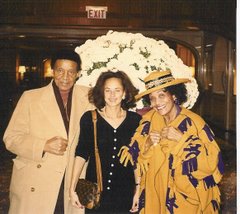
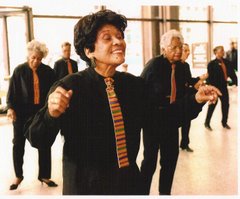
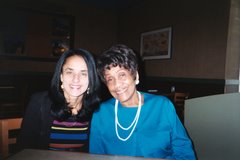
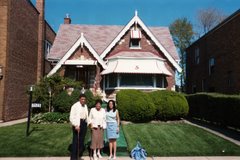
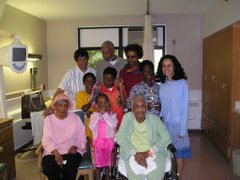

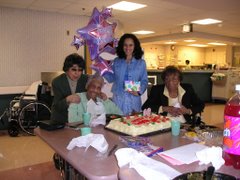
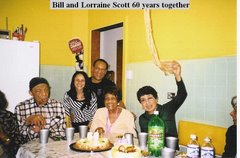


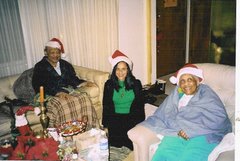
.jpg)